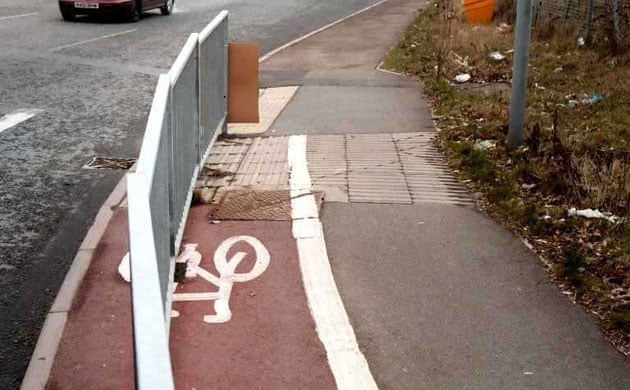Until recently, almost no transportation planning in the US included bicycles. In a way, it's understandable: For decades, few adults rode bikes for any reason, let alone to commute. But in many parts of the country, people of all ages, from officers in organizations to students and retail workers, are cycling to their workplaces or classrooms. Some cities and states have tried, often misguidedly, to "accommodate" cyclists. Some of their efforts have been, arguably, worse than ignoring us altogether.
One such effort has been a proposal to allow cyclists to cross the Potomac River between Maryland and Virginia on the recently-opened Governor Harry W. Nice/Senator Thomas "Mac" Middleton Bridge.
Even at my age-which is still, ahem, midlife because, well, I say it is!-- I probably could cross the bridge faster than I could say its name. But that, I suspect, is not the reason why folks like Jed Weeks are using words like "ludicrous," "unconscionable" and "malpractice" in reference to the proposition.
Weeks is the interim executive director and policy director of Bikemore. His organization focuses on the Baltimore area, about 90 miles north of the bridge. Washington, DC is about midway between them. and From the nation's capital and Chesapeake Bay, where the Potomac empties--a distance of about 100 miles--there is no other Potomac crossing.
The new bridge with a name even longer than its span replaced an old bridge called (relatively) simply the Governor Harry Nice Memorial Bridge. David Brickley, who owns the Dahlgren Railroad Heritage trail, led an unsuccessful fight to preserve that span for pedestrians and cyclists. He argued that it would have been "good for tourism" with its views and its potential for linking bike lanes and pedestrian paths on both sides of the river, allowing for longer trips.
 |
| Aerial view of the new Governor Harry W. Nice Memorial/Senator Thomas "Mac" Middleton Bridge. Image from the Maryland Transportation Authority |
When construction began on the new bridge, Larry Hogan was Maryland's governor. He and his transportation planners did not make any provisions for bike or pedestrian lanes. So how does the Maryland Transportation Authority want to "accommodate" cyclists?
Get ready for this: The agency's newest proposal calls for allowing cyclists to use the rightmost traffic lane in either direction. Upon entering the bridge, cyclists would push a button that would trigger flashing lights, alerting motorists to the presence of a cyclist. The lights would continue to blink their warning for 10 to 15 minutes to allow the cyclist to cross--while sharing that 12-foot-wide traffic lane with cars, SUVs, trucks and other vehicles crossing the span.
No, I didn't make that up. (If only I could!) Oh, but it gets even better or worse, depending on whether you're seeing this as a story or transportation issue. The bridge connects the Maryland and Virginia sections of US Highway 301, which is a spur of US 1. So, said motor vehicles are traveling at 50 MPH. At least, that's the speed limit.
If someone was plotting a way to kill cyclists, that person could hardly have done better. That's not my emotions talking. "I wonder if (Maryland Transportation Secretary Paul) Weidfeld would feel this is a good, safe option for bicyclists to go from Virginia to Maryland and Maryland to Virginia," mused Brickley. "I wonder whether he would feel safe bicycling over that bridge."
Weeks felt even though the issue is "sort of out of our jurisdiction" it was comment because the plan is "such a dangerous idea." He summed up his verdict thusly: "Anyone affiliated with a decision like that has no business designing bike or pedestrian infrastructure and should be banned from the practice."
Actually, from what I've seen and experienced, I could apply Weeks' brilliant summation to the vast majority of transportation planners who design bicycle infrastructure in the US. Sometimes I think they see us as a "problem," much as grandstanding politicians in places like Florida, Montana and Georgia portray transgender people, and their way to deal with us is to eliminate us or, if you like, send us across the bridge.




.jpg)





























